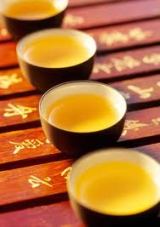The Search for Authentic Chinese Food
By Miriam Shahidi, Travel and Foreign Language Lover and Assistant UNA-GB Blogger
Ni Hao readers!
We hope you’re ready for the next UNA-GB Young Professionals cultural event, Taste of China! Read along to gain some insight into China’s unique cuisine and rev your appetites for our event, which is only mere days away!
I’m sure most of you have heard many things about Chinese food and its sometimes bizarre ingredients and offbeat recipes. The first thing we should know about our idea of Chinese food is that what we eat here in the US is very different from native Chinese food. In fact, American Chinese food is almost an entirely different genre by itself!

What you think when I say “Chinese food”
Globalization has always brought an integration of cultures, allowing people in one part of our shrinking world to experience some cultural aspect of another faraway country, and a perfect example is Chinese food in America. What we eat here varies vastly from what people eat in China. In America, a typical Chinese restaurant will serve dishes rich in oil and heavy sauce, and somewhat uniform in flavor. To an American, this seems like an exotic dining experience, but in fact, these dishes are missing a common characteristic of authentic Chinese cuisine- simplicity. Which leads us to ask, what actually is real Chinese Food? What role does it play in China besides basic sustenance?
Food is an extremely important part of Chinese culture. China, having the largest population in the world, stands in at about 1.35 BILLION people. That explains its huge agricultural industry and extensive diversity of cuisine. Historically, the idea has been for Chinese people that if you want a good meal you don’t have to spend a lot of money on it, no matter who you are or where you come from. What most Chinese recipes have in common are their inexpensive ingredients and great nutritional value. Here are some common staple ingredients in Chinese cuisine:
- Basic grains: rice and wheat, which are either eaten as is or processed into hundreds of different types of noodles and dumplings.
- Meat, tofu, or bean curd are used as the protein of the meal.
- Vegetables: bok choy, or Chinese mustard, has the texture of lettuce and is cooked or steamed. Eggplant, cabbage, broccoli, bean sprouts, mushrooms, snow peas, radish, and bamboo shoots are also very common vegetables to steam or fry.
- Flavor: soy sauce, chili paste or sauce, rice vinegar, plum sauce (also known as sweet and sour sauce). All are flavor enhancing and give each specialty its energizing kick!
- Green tea, black tea, and white tea are the most common drinks with and between any meal. They are all rich in antioxidants and carry great medicinal value. No meal is complete without a small, hot cup of tea!
Authentic Chinese food has many forms and recipes, depending on the region it comes from. A trip to China in 2007 along the Silk Trail showed me how much food really differs by region. Going from coastal China’s large cities like Beijing and Xi’an, to the Gobi desert in the West, food transforms from simple, predictable dishes like rice noodles with steamed vegetables, pork, beef, or chicken, garlic notes, and lots of soy sauce, to more exotic dishes the more West you go. In the West, dishes tend to be more exotic, and sometimes bizarre, especially through the eyes of a Westerner! Somewhere in the Gobi desert, people are eating pickled chicken feet with spicy yellow curry sauce and green peppers (which would rank 5 out of 5 peppers on those spicy guides on menus in American Chinese restaurants). Chicken feet, which are more delicious than they sound, are something you can find in Chinese grocery stores in America. Meanwhile, somewhere in America, people are eating Sweet and Sour Chicken with knives and forks, reading their zodiac sign from a menu. Another bizarre specialty in Western China is pig’s snout and it is eaten with flavorful soy and sesame sauce- and despite what it looks like, it’s absolutely delicious!
Real Chinese food is uniquely delicious and not to be missed. The detail, care, and craftsmanship that go into a real Chinese meal is unlike like any other. Don’t be put off when you see something like pickled chicken feet or frog legs at an Asian market in America. This is just one part of China’s vast culinary diversity. When you have the chance to taste authentic Chinese food, or better yet, make it yourself, it’s a meal you will never forget!
Are you hungry yet? We hope you are excited for A Taste of China and won’t miss the opportunity to try some real Chinese food with your fellow YP’s! Tickets are $20 and you should reserve your spot as soon as possible!
Taste of China
Wednesday, August 21 @ 6pm
Shojo Restaurant
Tickets on sale here!
Posted on August 9, 2013, in Young Professionals, Young Professionals: "Taste of...". Bookmark the permalink. 1 Comment.


Real Chinese food in the US is hard to find… LOL Thanks for the Info!!! I usually use http://www.samppy.com/chinese-food-near-me to find chinese delivery restaurants. Thought it might help in finding authentic chinese food.